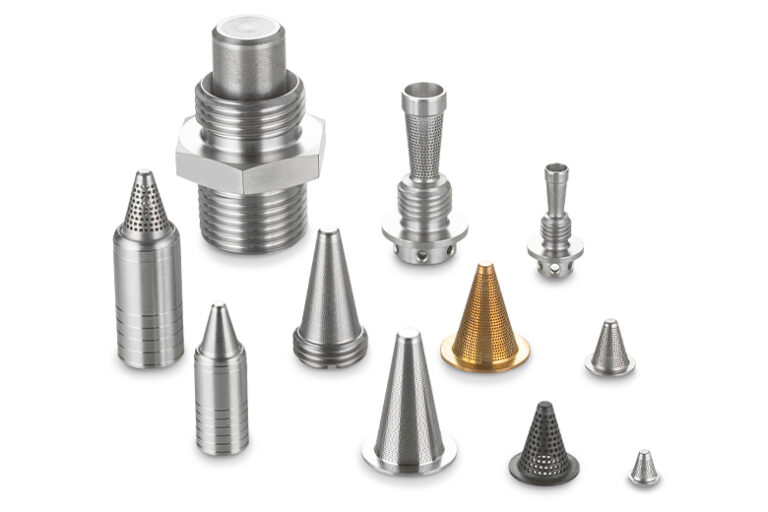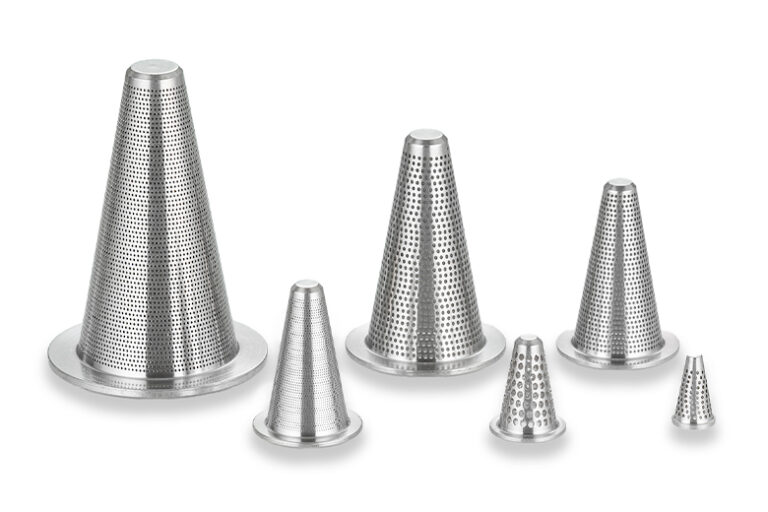While often overlooked in the design process, the last chance filter plays an important role in the success of most aerospace systems. As aircraft hydraulic systems increased from 3000 to 5000 psid, traditional filtering technology needed to adapt.
Contamination poses a serious risk to any pneumatic or hydraulic system. From flight controls to launch vehicles, sensitive components can be located far from the system filter. Smaller filters within the system are often the last line of defense to protect these critical components against rogue contamination, but their necessity is frequently discovered late in the design process. Initial testing may reveal sources of contamination not previously anticipated, whether introduced prior to operation or while the system is in use. Foreign object debris (FOD) can result from built-in factors traced back to the manufacturing process, such as sintered elements, weld flashing, tape for fitting joints, tiny burrs that separate from material during construction, or even insects that travel into open passages. Contamination can also be generated over time via sliding fits, meshing gears, erosion, or cavitation. In addition to the small issues such as minor leaks or slightly reduced flow, contamination may cause serious consequences, including increased maintenance, decreased performance or efficiency, or catastrophic system failure.

As a specialist in miniature, precision components, The Lee Company is continually developing and enhancing our field-proven range of HI-BAR Safety Screens to effectively block contaminants.
As a leader in miniature fluid control technology, we at The Lee Company saw the importance of last chance filters early on. When a filter accumulates contamination, the pressure drop slowly increases until the filter is almost fully clogged. This is because the fluid can easily find pathways around the captured contamination and exit the screen. As that buildup intensifies, the paths through the screen lessen and the pressure drop increases dramatically. At this stage, the filter can experience almost the entire system pressure as a pressure drop. This phenomenon caused traditional mesh filters to rupture, allowing an influx of FOD, screen material, and other contamination to flow downstream all at once. To prevent total system failure, the only solution was to wrap a filter around an extremely robust, yet restrictive structure, adding cost and weight while increasing the pressure drop across the element.
As system pressure demands increased, we endeavored to develop an innovative filter that could handle a differential pressure equal to the system’s proof pressure without significant increases in either resistance to flow or cost. These efforts resulted in the creation of the “laser drilled last chance filter.” We are the original inventor of a proprietary process which has endured for over thirty years. The resulting filter is extraordinarily robust, eliminates welds and brazes, and can be produced in a variety of configurations and materials for a wide range of applications in aerospace and beyond. First introduced in 1990, HI-BAR® Safety Screens are rugged, one-piece designs machined from solid bar stock that circumvent obstacles associated with wire mesh filters (such as low pressure capability or restrictive support structures). These filters are rated to withstand burst and collapse pressures up to 7500 psid.

As a last chance filter, the Lo-Lohm HI-BAR Screen features an extremely robust, one-piece design without joints or seams that has been optimized to produce the lowest pressure drop for the package size.
The Lee Company continues to innovate this technology beyond standard offerings. Our most recent innovation – the Lo-Lohm HI-BAR Safety Screen – utilizes a unique drilling process to reduce pressure drop by 70% on average as compared to earlier designs (without sacrificing burst or collapse pressure capability). Other innovations include hole sizes between 25 and 1500 microns, pressure ratings exceeding 10 ksi, and a wide variety of materials including aluminum, stainless steel, titanium, brass, PEEK, MP35N, Alloy 465, A286, copper-nickel tin alloy (Toughmet®), and nickel-copper alloy (Monel® R405).
For more than 75 years, The Lee Company has been a leading supplier of miniature, precision fluid control products to a wide range of industries including automotive, diagnostics, medical equipment, scientific instruments, aerospace, oil & gas, and off-highway equipment. Lee products are recognized worldwide for superior quality, reliability, and performance. To learn more about The Lee Company’s advances in contamination prevention and our HI-BAR Safety Screens, click here to contact a Lee Sales Engineer today.
Always verify flow calculations by experiment.
*There are many parameters to consider when determining V-Factor. Click here for more information.
